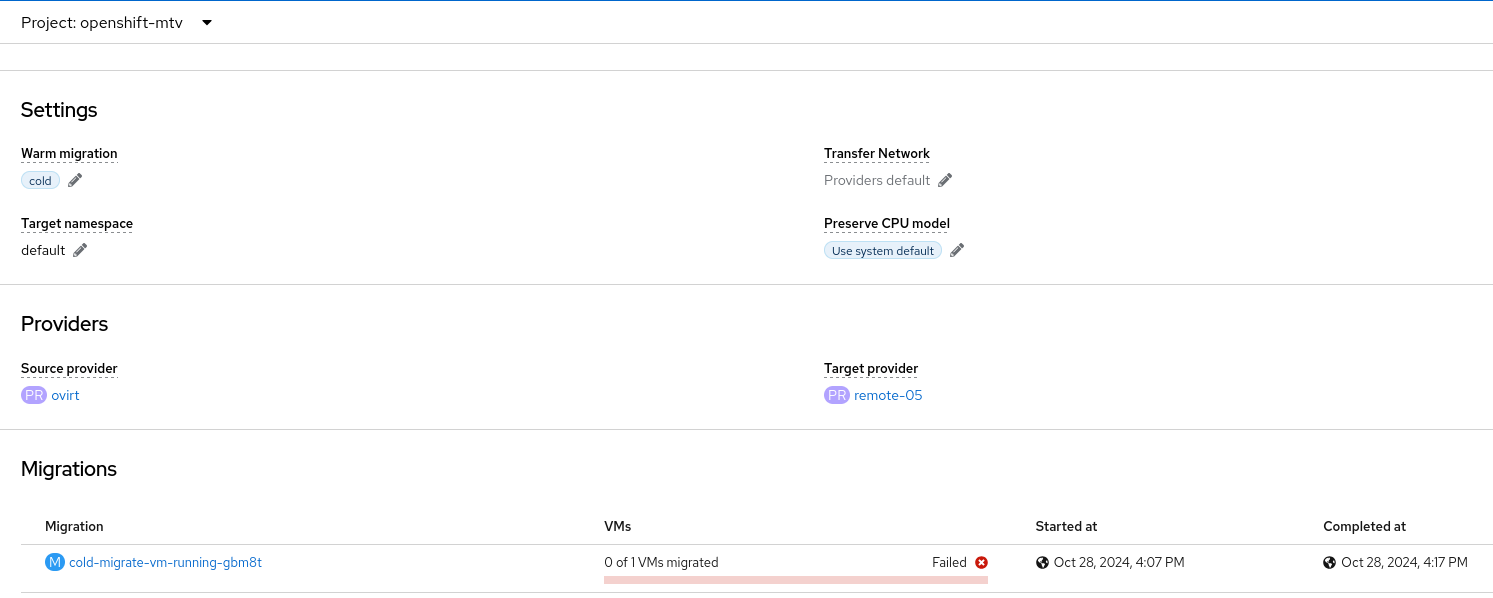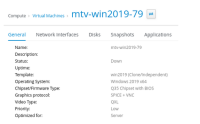Description of problem:
Cold migrate win2019 VM from RHV to remote cluster, during VirtualMachineCreation phase, hit firmware.bootloader setting error: "admission webhook "virtualmachine-validator.kubevirt.io" denied the request: spec.template.spec.domain.firmware.bootloader has both EFI and BIOS configured, but they are mutually exclusive."
Version-Release number of selected component (if applicable):
MTV 2.7.2, CNV 4.17.0
Step1: Create RHV provider, select the VM and create the cold migration plan to migrate VM to remote cluster

Step2: Check the migration pipeline: DiskTransfer succeeded, hit error below during the "VirtualMachineCreation". Checked the VM setting on RHV:"Chipset/Firmware Type: Q35 Chipset with BIOS"
admission webhook "virtualmachine-validator.kubevirt.io" denied the request: spec.template.spec.domain.firmware.bootloader has both EFI and BIOS configured, but they are mutually exclusive.


Actual results:
In step2: Hit error during the VirtualMachineCreation
Expected results:
In step2: Create VM successfully
- is blocked by
-
CNV-49381 [v4.17.1] PreferredEfi applied when BIOS already enabled within VirtualMachineInstanceSpec
-
- Closed
-
- links to
-
 RHBA-2024:143338
MTV 2.7.5 Images
RHBA-2024:143338
MTV 2.7.5 Images






